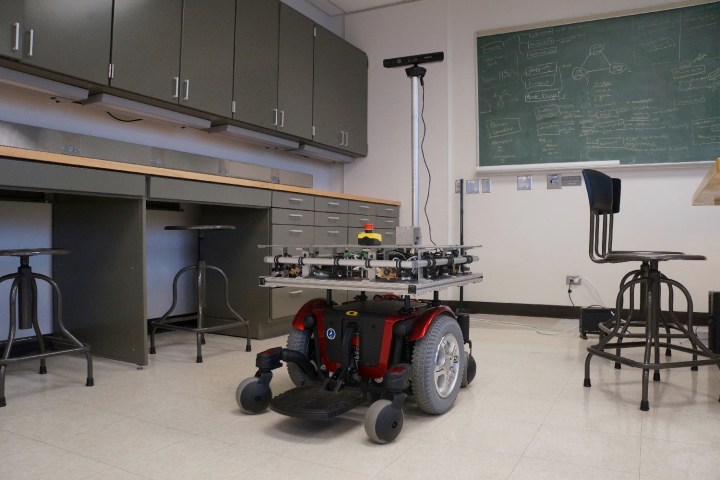
That’s the mission of Brenna Argall, an assistant professor of Rehabilitation Robotics at Northwestern University and research scientist at the Rehabilitation Institute of Chicago. Argall and her team are developing autonomous wheelchairs designed for people with severe disabilities, such as significant motor impairments or the physical inability to operate a traditional control mechanism like a joystick.
“By making assistive machine easier to control, because they can autonomously control themselves, our goal is to make people with severe motor impairments more able and independent,” Argall told Digital Trends.
Argall first became interested in robotics as a math undergraduate at Carnegie Mellon University. She later went on to receive a Ph.D. in the subject, but it was only when she became faculty at Northwestern five years ago, that she decided to combine it with an interest in medicine and healthcare.

“It took a bit of time to figure out my lab’s positioning,” she said. “Robotics autonomy doesn’t have much representation within the field of rehabilitation robotics, but there clearly is a lot of low-hanging fruit. The key is to be judicious in selecting which problem to tackle, so that it not only is feasible technically but also is addressing user need in a way that is likely to be adopted by the user. And that is where all the current projects in — and core research direction of — my lab come from: leveraging robotics autonomy in order to enable human autonomy.”
Unlike a self-driving car, which will be used in broadly the same by all of its users, Argall’s work is challenging because every user will have different requirements. “Each person is unique in their personal preferences and abilities, and we need to be responsive to this,” she said. As a result, her team is working with modular software and hardware that, in the former case, lets users opt in and out of various autonomous assistance modules, and in the latter, add additional sensors for their wheelchair depending on requirements.
Argall also said that finances will vary from person to person — particularly since autonomy add-ons “will not be covered by insurance anytime soon.” As a result, the team prioritizes cheap, off-the-shelf components, with the goal of making the necessary modifications to existing wheelchairs (rather than manufacturing entirely new ones) for the cost of a laptop computer.
There’s still a way to go, but Argall said, “the basic functionality and technology are there.” So how far are we from an autonomous wheelchair that could carry out the kind of self-driving travel and obstacle avoidance users would need? “My estimate is five years,” she concluded. “Perhaps faster, for a version … that provides just basic obstacle avoidance, or if we decided to go full steam ahead on commercialization, which we at the moment are not.”
As cool as self-driving cars undoubtedly are, it’s hard to think of too many more transformative uses of AI and smart sensors than projects like this one.
Editors' Recommendations
- This AI algorithm could save lives in quake zones
- Meet the startup that gives wheelchairs aftermarket superpowers
- World’s Fair 2.0: The mission to resurrect the greatest tech expo of all time
- A.I. teaching assistants could help fill the gaps created by virtual classrooms
- ‘Skyborg’: U.S. Air Force seeks fleet of autonomous planes


